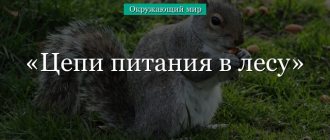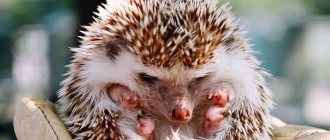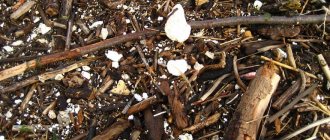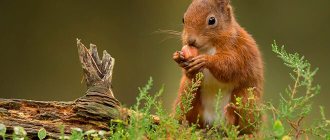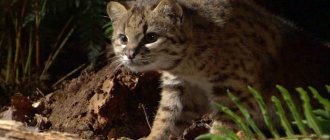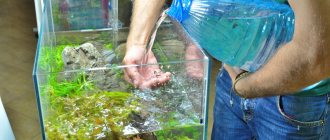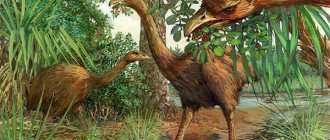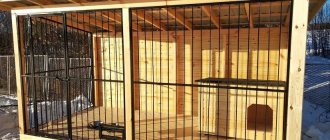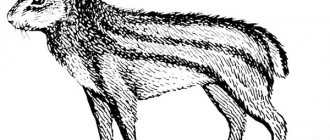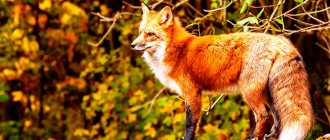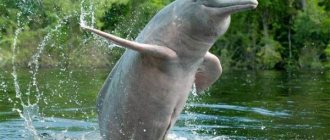Most living organisms eat organic food, this is the specificity of their life activity on our planet. Among this food are plants, the meat of other animals, their products and dead matter ready for decomposition. The process of nutrition itself occurs differently in different species of plants and animals, but so-called food chains are always formed. They transform matter and energy, and nutrients can thus pass from one creature to another, carrying out the cycle of substances in nature.
Producers and consumers
- The first are autotrophic organisms that feed on inorganic food. They take energy and matter to create their own bodies, using gases and salts from their environment. An example is green plants that get their food from sunlight through photosynthesis. Or numerous types of microorganisms that live everywhere: in the air, in the soil, in the water. It is the producers who, for the most part, constitute the first link in almost any food chain in the forest (examples will be given below).
- The second are heterotrophic organisms that feed on organic matter. Among them are those of the first order that directly provide nutrition through plants and bacteria, producers. Second order - those who eat animal food (predators or carnivores).
Autotrophs
Autotrophs or producers are organisms that are able to build their bodies from inorganic compounds using solar energy. Autotrophs include plants (plants only).
They synthesize from CO2, H2O (inorganic molecules) under the influence of solar energy - glucose (organic molecules) and O2. They form the first link in the food chain and are at the 1st trophic level. Plants eat starch and nutrients that come from soil and sunlight. They do not need to search for food; it will be enough to simply use their own innate abilities and characteristics to obtain the necessary nutrients to ensure growth and development.
So, autotrophs are plants that get their food from rain, soil and sunlight. Photosynthesis (use of light) and chemosynthesis (chemical energy) play an important role in supplying cells with nutrients and minerals. During these complex processes, raw nutrients and minerals are converted into specialized cells that absorb sunlight and transform it into energy. Autotrophs are also called producers.
There are two types of autotrophs known in nature:
- Photoautotrophs . This type includes living beings involved in photosynthesis - plants that convert solar energy into complex combinations. That is, they produce nutrients derived from carbon dioxide due to the work of photosynthesis. Algae and cyanobacteria also live by a similar principle.
- Chemoautotrophs . Thanks to the chemical interactions of inorganic compounds, organic substances enter the ecosystem organisms. This process is called “chemosynthesis”.
Almost all producers are photoautotrophs, i.e. green plants, algae and some prokaryotes, such as cyanobacteria (formerly called blue-green algae). The role of chemoautotrophs on the biosphere scale is negligible. Microscopic algae and cyanobacteria that make up phytoplankton are the main producers of aquatic ecosystems. On the contrary, the first trophic level of terrestrial ecosystems is dominated by large plants, for example, trees in forests, grasses in savannas, steppes, fields, etc.
Herbivores
Animals that feed on plant foods are found in abundance in various forests. Of course, the tropical forest, for example, is very different in its content from the lands of the middle zone. The jungle is home to various species of animals, many of which are herbivores, which means they form the second link in the food chain, feeding on plant foods. From elephants and rhinoceroses to barely visible insects, from amphibians and birds to mammals. So, in Brazil, for example, there are more than 700 species of butterflies, almost all of them are herbivorous.
The fauna, of course, is poorer in the forest belt of central Russia. Accordingly, there are much fewer food chain options in a mixed forest. Squirrels and hares, other rodents, deer and moose, hares - this is the basis for such chains.
Biological significance
Mapping food chains helps control the size of each population in many existing ecosystems. Using these linear images, it is convenient for biologists and ecologists to track changes in the species diversity of a particular zone, to calculate the nature and degree of influence of certain factors on species: pollution, urbanization, introduction of new species, climate change, environmental problems.
Trophic pyramids quite clearly show the superiority of one population over another, their relationships, when a sharp increase in one species leads to a reduction in another. Thus, the study of food relationships in nature using trophic chains helps control the state of the environment and protect vulnerable species of animals, fungi and plants, maintaining the natural balance in the biosphere.
Predators or carnivores
They are called that because they eat flesh, feeding on the meat of other animals. They occupy a dominant position in the food chain, often being the final link.
In our forests these are foxes and wolves, owls and eagles, sometimes bears (but in general they are omnivores that can eat both plant and animal foods). A food chain can involve either one or several predators that eat each other. The final link, as a rule, is the largest and most powerful carnivore. In the middle forest, this role can be performed, for example, by a wolf. There are not too many such predators, and their population is limited by the nutritional base and energy reserves. Since, according to the law of conservation of energy, during the transition of nutrients from one link to the next, up to 90% of the resource can be lost. This is probably why the number of links in most food chains cannot exceed five.
Conclusion
The food chain maintains the well-being of the ecosystem in which it is found. It ensures population control and contributes to the normal balance of substances in nature.
Each link (level) of the chain is very important, because when it disappears, the chain “opens” and all participants become at risk. Smaller units will multiply uncontrollably, and larger ones will die out due to lack of food. That's why it's so important to monitor the ecology of the forest and endangered animals!
There are a great variety of plants and animals on earth. All of them are forced to ensure their livelihoods by eating and processing vital energy. Thus, their interaction always unites creatures into food chains, along the links of which nutrients and energy pass from one to another.
Scavengers
They feed on the remains of other organisms. Oddly enough, there are also quite a lot of them in the natural forest: from microorganisms and insects to birds and mammals. Many beetles, for example, use the corpses of other insects and even vertebrates as food. And bacteria are capable of decomposing the dead bodies of mammals in a fairly short time. Scavenger organisms play a huge role in nature. They destroy matter, converting it into inorganic substances, releasing energy, using it for their life activity. If it were not for scavengers, then, probably, the entire earthly space would be covered with the bodies of animals and plants that have died throughout time.
Destructors
An important role in the ecosystem and the structure of food interaction is played by representatives of the group of destructors or destroyers. This group consists of decomposers that process non-living organic compounds and convert them into inorganic substances. Destructors occupy a niche of a separate trophic stage in nature. Their role is to process decaying plants and the remains of dead animals. Typical representatives of decomposers are classes of fungi and bacteria, which, in turn, play a great role in the activities of ecosystems. With their help, the soil receives nutrition and water used by producer representatives.
Destructors (decomposers) are organisms that, in the course of their life activity, convert (destroy) organic substances into inorganic substances suitable for use by producers. They are heterotrophs. These are mainly bacteria and fungi. Destructors, in their position in the ecosystem, are close to detritivores, since they also feed on dead organic matter.
Finally, destructors in the form of saprophages and bacteria use the energy of dead plants and animals. At this stage, the largest amount of energy stored by living beings is consumed. The decomposition of organic matter occurs in two directions: the breakdown of carbohydrates during mineralization to carbon dioxide, ammonia and water; the formation of humus in the soil under the influence of microorganisms.
By returning biogenic elements to the soil or aquatic environment, they thereby complete the biochemical cycle. Functionally, destructors are the same heterotrophs (consumers), therefore they are often called microconsumers.
Examples of food chains in the forest
To create a food chain in a forest, you need to know about the inhabitants who live there. And also about what these animals can eat.
iv>
- Birch bark – insect larvae – small birds – birds of prey.
- Fallen leaves are bacteria.
- Butterfly caterpillar – mouse – snake – hedgehog – fox.
- Acorn - mouse - fox.
- Cereals – mouse – eagle owl.
There is also something more authentic: fallen leaves – bacteria – earthworms – mice – mole – hedgehog – fox – wolf. But, as a rule, the number of links is no more than five. The food chain in a spruce forest is slightly different from those in a deciduous forest.
- Cereal seeds – sparrow – wild cat.
- Flowers (nectar) – butterfly – frog – snake.
- Fir cone – woodpecker – eagle.
Food chains can sometimes intertwine with each other, forming more complex, multi-level structures that unite into a single forest ecosystem. For example, the fox does not disdain to eat both insects and their larvae, and mammals, thus several food chains intersect.
Source: fb.ru
Closed forest food chain
Unlike a coniferous forest, where trees typically do not lose their leaves every year, a deciduous forest is characterized by a predominance of flowering trees, shrubs and shrubs, most of which lose their leaves as the weather gets colder and the daylight period becomes shorter. Such trees and plants enter a state of dormancy during the winter, an adaptation designed to preserve life when energy sources decrease.
Solar energy - the beginning
The food chain in the deciduous forest includes
- «
- "decomposing".
At the beginning of the chain is the sun , which turns plants into producers. When solar energy in the form of light and heat strikes the surface of a plant leaf, a photosensitive molecule called chlorophyll stimulates a process called photosynthesis, a series of chemical reactions that convert the sun's energy into sugar molecules. These molecules store energy that will be used later by the plant and, ultimately, by those organisms that use the plant for food. Some of this energy goes into the production of seeds, which carry the genetic code for the further development of the species.
Another result of photosynthesis is the production of oxygen and the absorption of carbon in the form of carbon dioxide gas.
Manufacturers
Food producers in a deciduous forest are trees and plants that convert sunlight into mass and stored energy.
> and plants subsequently become the main source of food for consumers above them in the food chain: for example, insects, birds, rodents and deer eat leaves and other parts of plants, taking the stored energy as food. However, symbiosis also occurs, in which organisms of different species act within a kind of cooperative arrangement, such as when bees pollinate plants when they collect nectar. In addition, bacteria in the soil break down nutrients into a form that is easily used by plant root systems.
Consumers
In the deciduous forest food chain, the inhabitants are organisms that cannot produce their own food and must eat other organisms to survive. Consumers may be of primary, secondary or tertiary type. Primary consumers include insects, rodents and large herbivores, which eat mainly plants, herbs, seeds and berries.
Secondary consumers include birds of prey , such as owls and hawks, as well as other small predators such as foxes and skunks, which eat insects and rodents and other animals. Tertiary consumers, said to be at the "top" of the animal food chain, are predators that prey on small animals below them in the food chain.
Decomposers or decomposers
All living things have a lifespan and without a way to dispose of dead organisms, the ecosystem will soon be filled with the remains of plant and animal life. Decomposers break down such remains, turning them into smaller and smaller pieces that eventually become new soil. Bacteria and insects perform this function, as do fungi and some large scavengers. The resulting nutrient-rich soil is ideal for seed growth, beginning the cycle of life.
Consumers are divided into:
- Primary
- Secondary
- Large secondary
Primary consumers are mainly small animals. The forest provides food, cover in mosses, moderate temperatures and humidity, which encourages the growth of many types of insects. This is a mosquito paradise! As well as insects, there are small mammals: voles (tiny mammals like mice), chipmunks, squirrels and seed-eating birds. They feed on seeds, grasses and even mushrooms. Large animals such as deer and elk also find food in this biome.
An interesting primary consumer is salmon. These fish hatch from eggs in cold mountain streams and eat tiny aquatic organisms and insects that fall into the water. Young fish swim down the river to the ocean, where they grow to maturity. When they are fully grown, the larger fish return from the ocean and swim upstream to lay their eggs. The parents then die, and their bodies provide food for all the meat-eaters in the area.
Secondary consumers are also located at home in the forest area. Tiny shrews eat insects, and frogs capture insects as they fly. There are many insect-dwelling birds, some of which, like the woodpecker, are adapted to finding insects in trees. Ducks eat small animals, and raccoons eat animals, fish, frogs and fruit. Owls eat voles and chipmunks. Insects live as parasites on other animals.
Large secondary consumers , such as wolves, bears and cougars, are the only ones that can overpower a deer or elk. However, once they have made a kill, small predators may move on to get a share. Large carnivores sometimes also eat smaller ones.
There are other animals in this food web such as foxes, beavers, blackbirds and porcupines. Because plants do it well, animals thrive too.
Source: zveri.guru
Heterotrophs
Heterotrophs (from the Greek Heterone - “other” and trophe - “nutrition”) are organisms that require organic compounds as a source of carbon for growth and development. Also known as consumers (from the Latin consume - to use).
Heterotrophic organisms include all animals and humans, as well as some parasitic plants and bacteria. Among these plants one can distinguish a group of parasitic plants and predator plants. Heterotrophic organisms (animals, fungi, some prokaryotes) cannot create organic compounds directly from inorganic ones.
Heterotrophs or consumers are organisms that use ready-made organic substances (usually plant or animal tissue) for their nutrition; this process is known as heterotrophic nutrition.
Heterotrophs are known as consumers or consumers in the food chain. Heterotrophs are the opposite of autotrophs, which use inorganic substances, carbon dioxide or bicarbonate, as the only source of carbon. All animals are heterotrophs, as are fungi and many bacteria and archaea (a group of microorganisms with a prokaryotic type of cell structure). Some parasitic plants are also fully or partially heterotrophic, while carnivorous plants consume meat to obtain nitrogen and are autotrophic.
Heterotrophs are unable to synthesize carbon-based organic compounds independently using inorganic sources (e.g. animals, unlike plants, cannot carry out photosynthesis) and therefore must obtain nutrients from autotrophs or other heterotrophs. To be called a heterotroph, an organism must obtain carbon from organic compounds. If it obtains nitrogen from organic compounds, but not carbon, it will be considered an autotroph.
What are food chains like?
There are two types: pasture and detrital. The first ones are more common in nature. In such chains, the first link is always the producers (plants). They are followed by consumers of the first order - herbivores. Next are second-order consumers—small predators. Behind them are consumers of the third order - large predators. Further, there may also be fourth-order consumers, such long food chains are usually found in the oceans. The last link is the decomposers.
The second type of food chain -
detrital - is more common in forests and savannas.
They arise due to the fact that most of the plant energy is not consumed by herbivores, but dies, then undergoing decomposition by decomposers and mineralization. Food chains of this type begin from detritus - organic remains of plant and animal origin. The first-order consumers in such food chains are insects, for example, dung beetles, or scavenger animals, for example, hyenas, wolves, vultures. In addition, bacteria that feed on plant residues can be first-order consumers in such chains.
In biogeocenoses, everything is connected in such a way that most species of living organisms can become participants in both types of food chains .
Energy
The most important task of the functioning of food pyramids is energy exchange between organisms in nature. In this case, huge losses of energy are inevitable, since it is produced only at the first stage, and then it is only absorbed. With each absorption, a fair part of it (90% - according to Lindemann’s rule) evaporates, giving off heat, and the remainder ensures the vital activity of each new absorber. Typically, these sequences record energy absorption over a period of time.
The process clearly described is demonstrated by the pyramid of energy flows. A pyramid of this type is an original graphic model that displays the amount of energy contained in each link of the trophic level of the food system in a certain ecosystem. As the level increases, the indicators decrease. This type of pyramid most accurately conveys the idea of the organization of natural communities and the functions of each of their elements, since it shows the speed with which the biomass of food passes through the linear food system in nature.
Food chains in deciduous and mixed forests
Deciduous forests are mostly found in the Northern Hemisphere of the planet. They are found in Western and Central Europe, in Southern Scandinavia, the Urals, Western Siberia, Eastern Asia, and Northern Florida.
Deciduous forests are divided into broad-leaved and small-leaved. The former are characterized by trees such as oak, linden, ash, maple, and elm. For the second - birch, alder, aspen .
Mixed forests are those in which both coniferous and deciduous trees grow. Mixed forests are characteristic of the temperate climate zone. They are found in southern Scandinavia, the Caucasus, the Carpathians, the Far East, Siberia, California, the Appalachians, and the Great Lakes.
Mixed forests consist of trees such as spruce, pine, oak, linden, maple, elm, apple, fir, beech, and hornbeam.
Pasture food chains are very common in deciduous and mixed forests . The first link in the food chain in forests is usually numerous types of herbs and berries, such as raspberries, blueberries, and strawberries. elderberry, tree bark, nuts, cones.
First-order consumers will most often be herbivores such as roe deer, moose, deer, rodents, for example, squirrels, mice, shrews, and hares.
Second-order consumers are predators. Usually these are fox, wolf, weasel, ermine, lynx, owl and others. A striking example of the fact that the same species participates in both grazing and detrital food chains is the wolf: it can both hunt small mammals and eat carrion.
Second-order consumers can themselves become prey for larger predators, especially birds: for example, small owls can be eaten by hawks.
The final link will be decomposers (rotting bacteria).
Examples of food chains in a deciduous-coniferous forest:
- birch bark - hare - wolf - decomposers;
- wood - chafer larva - woodpecker - hawk - decomposers;
- leaf litter (detritus) - worms - shrews - owl - decomposers.
Features of food chains in coniferous forests
Such forests are located in northern Eurasia and North America. They consist of trees such as pine, spruce, fir, cedar, larch and others.
Here everything is significantly different from mixed and deciduous forests .
The first link in this case will not be grass, but moss, shrubs or lichens. This is due to the fact that in coniferous forests there is not enough light for a dense grass cover to exist.
Accordingly, the animals that will become consumers of the first order will be different - they should feed not on grass, but on moss, lichens or shrubs. This could be some species of deer .
Although shrubs and mosses are more common, herbaceous plants and shrubs are still found in coniferous forests. These are nettle, celandine, strawberry, elderberry. Hares, moose, and squirrels usually eat this kind of food, which can also become consumers of the first order.
Second-order consumers will be, as in mixed forests, predators. These are mink, bear, wolverine, lynx and others.
Small predators such as mink can become prey for third-order consumers .
The closing link will be rotting microorganisms.
In addition, detrital food chains . Here the first link will most often be plant humus, which feeds soil bacteria, becoming, in turn, food for single-celled animals that are eaten by mushrooms. Such chains are usually long and can consist of more than five links.
Source: lapku.ru
